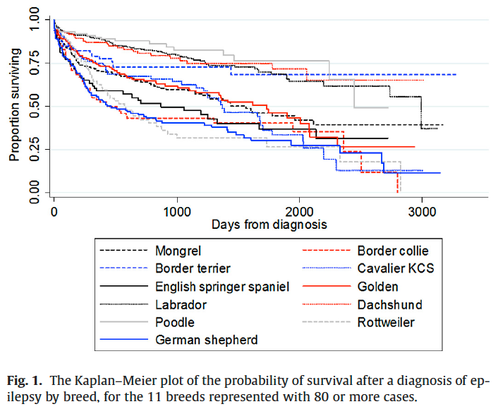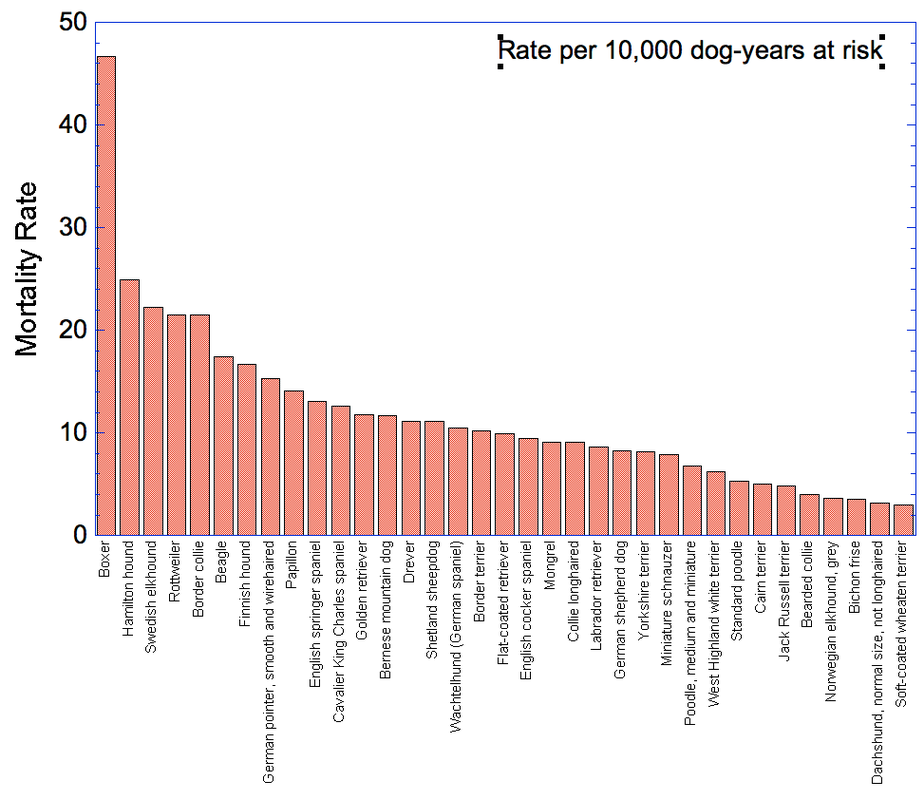A new study just published (Heske et al 2014) documents the incidence of epilepsy (both idiopathic and symptomatic) and mortality rate in 35 breeds of dogs in Sweden, and the Boxer is (unfortunately) the clear winner by far in terms of both.
The study was based on insurance data for the years 1995-2006, and the data were expressed as either incidence or mortality per 10,000 dog-years at-risk (DYAR; equivalent to 10,000 dogs followed for 1 year). The study population consisted of 665,249 dogs, for which there were insurance claims for epilepsy from 5013 dogs. Males had both higher incidence and higher mortality than females (1.4:1). They found that breeds likely to be kept only as companions had higher rates of survival than those likely to be dual purpose - companion as well as hunting, herding, and working, perhaps reflecting a willingness to invest more in treatment of companion dogs. Females survived longer than males after diagnosis. In general, dogs lived only 1.5 years after diagnosis.
NOTE: These data are for ONLY the 35 breeds with the most records in the Swedish database. So for example the boxer is not necessarily the breed worst affected by epilepsy; it is the breed with the highest rate and mortality among the breeds used in this analysis. Most dogs in Sweden are insured, so this is a reasonably accurate assessment of incidence and mortality for the breeds they studied.
MORTALITY






